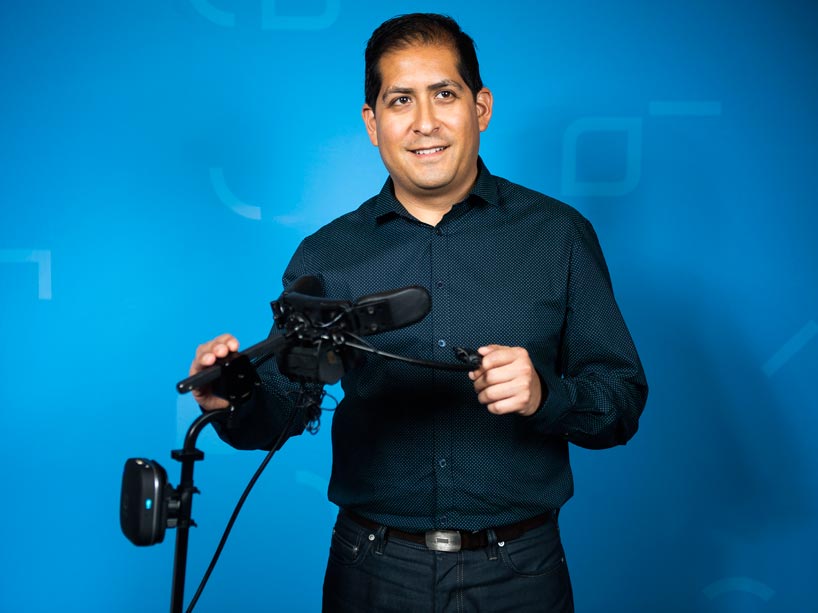The future of work is more inclusive

Ryerson graduate Mauricio Meza runs a startup called Tecla. Photo credit: Arthur Mola.
While technological changes can leave people behind, they can also bring more people in. One future trend highlighted by Brookfield Institute for Innovation and Entrepreneurship (external link) research is inclusive design, with more products and services designed for diverse needs. “As we have an aging population, we realize that more mainstream and inclusive design becomes more important,” says Brookfield economist Diana Rivera.
Microsoft has recognized the market for inclusive design and made it a core mission, explaining that “designing for people with permanent disabilities actually results in designs that benefit people universally.” Mauricio Meza (MBA, MTI ’10) says that inclusive design has been spurred on by recent regulatory requirements, but as more people use adaptive technology, users are providing feedback, which is further spurring development teams forward.
After years helping people with spinal cord injuries access technology to allow them to be more independent, Meza saw major gaps in the market. “There were a lot of cool projects being done by researchers. They would do testing, they would do a paper, but then they would finish their PhD and move on to a different project, and things were kind of abandoned.”
Meza chose Ryerson for his MBA because it offered a stream in technology innovation, and he wanted to build adaptive technologies that would actually make it to market. Now, he’s running Tecla (external link) , a company whose signature product is a wireless device that allows people with limited mobility to interface with smartphones, tablets and computers—users can open and close apps, text, and scroll through social media. The device can be operated in various ways, including by a person’s chin or hands (some have enough mobility to push a joystick or button, but not the mobility to lift a finger onto a touchscreen).
Meza’s advice for those interested in bringing new technology to the market? Don’t try to make a product perfect. “Mock a solution as early as possible,” he says. That way, innovators can market the early product, make sure the need and interest is there and improve the prototype based on client’s suggestions. Meza hears from customers about how the technology is working for them. “We hear stories about people going back to school, or being able to work from home independently,” he says.
This story was first published in Ryerson University Magazine January 2020. To read more, visit Ryerson University Magazine (external link) .